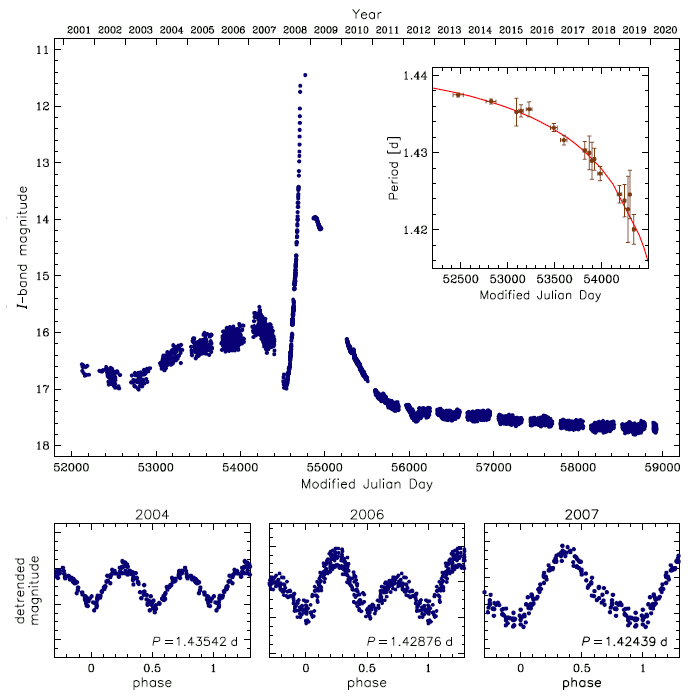W Ursae Majoris type (EW) binaries
Eclipsing variables of the W Ursae Majoris (W UMa) type are contact binaries, where both stars fill their Roche lobes and therefore are in physical contact with each other. Consequently, the components of the system share a common envelope, leading to the same surface temperature despite their different masses. W UMa stars are characterized by continuous light variations with nearly equal depths of the primary and secondary eclipses. Due to the tidal deformation of the stars, it is impossible to determine the onset and end of the eclipses from the light curve.
V1309 Scorpii - a "Rosetta stone" for stellar mergers
Period changes are commonly observed in W UMa stars which is usually associated with mass transfer between the system's components. The shortening of the orbital period, coupled with the effective removal of angular momentum from the system, can result in the merging of the two stars. V1309 Scorpii (Nova Scorpii 2008) was discovered in September 2008 when it underwent an outburst that increased its brightness by about 10 magnitudes. This event turned out to be an example of a "red nova" - a class of variable stars that lacked a definitive explanation at the time. Fortunately, V1309 Scorpii had been observed by the OGLE survey for seven years prior to the eruption. Using the OGLE time-series photometry, Tylenda et al. (2011) showed that the progenitor of V1309 Sco was a contact binary with an orbital period that was decreasing at an accelerating rate.
The figure below shows the light curve of V1309 Scorpii, obtained over 20 years of OGLE monitoring. After the outburst, no signs of binarity were observed, confirming that Nova Scorpii 2008, and by extension other red novae, are the result of stellar mergers. Due to its crucial role in clarifying the process of star mergers, V1309 Scorpii has been referred to as a "Rosetta stone" for understanding red novae.
 |
OGLE light curve of V1309 Scorpii. The inset on the right shows the evolution of the orbital period of the V1309 Scorpii progenitor. The lower panels present the detrended and phased light curves observed four, two, and one year before the outburst (in 2004, 2006, and 2007, respectively). Note the dramatic changes in the light curve shape just before the stars merged. |
|
